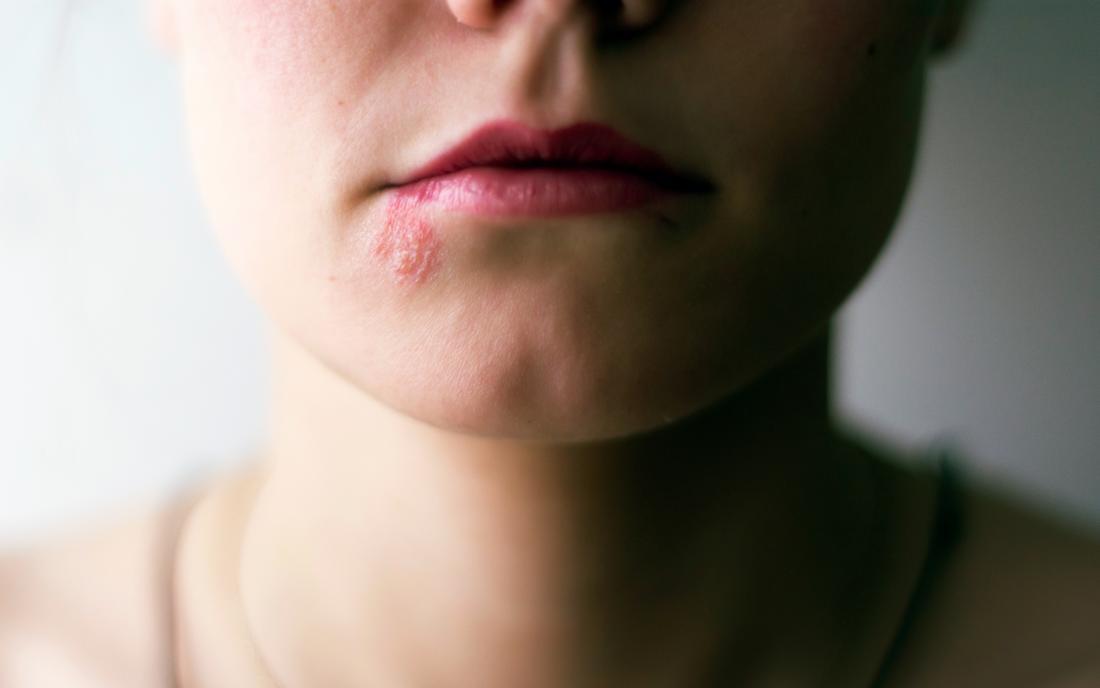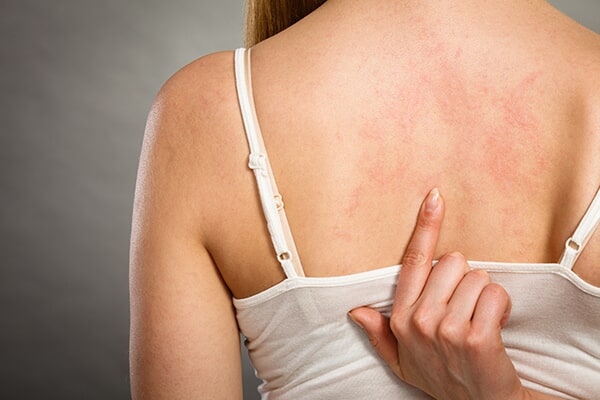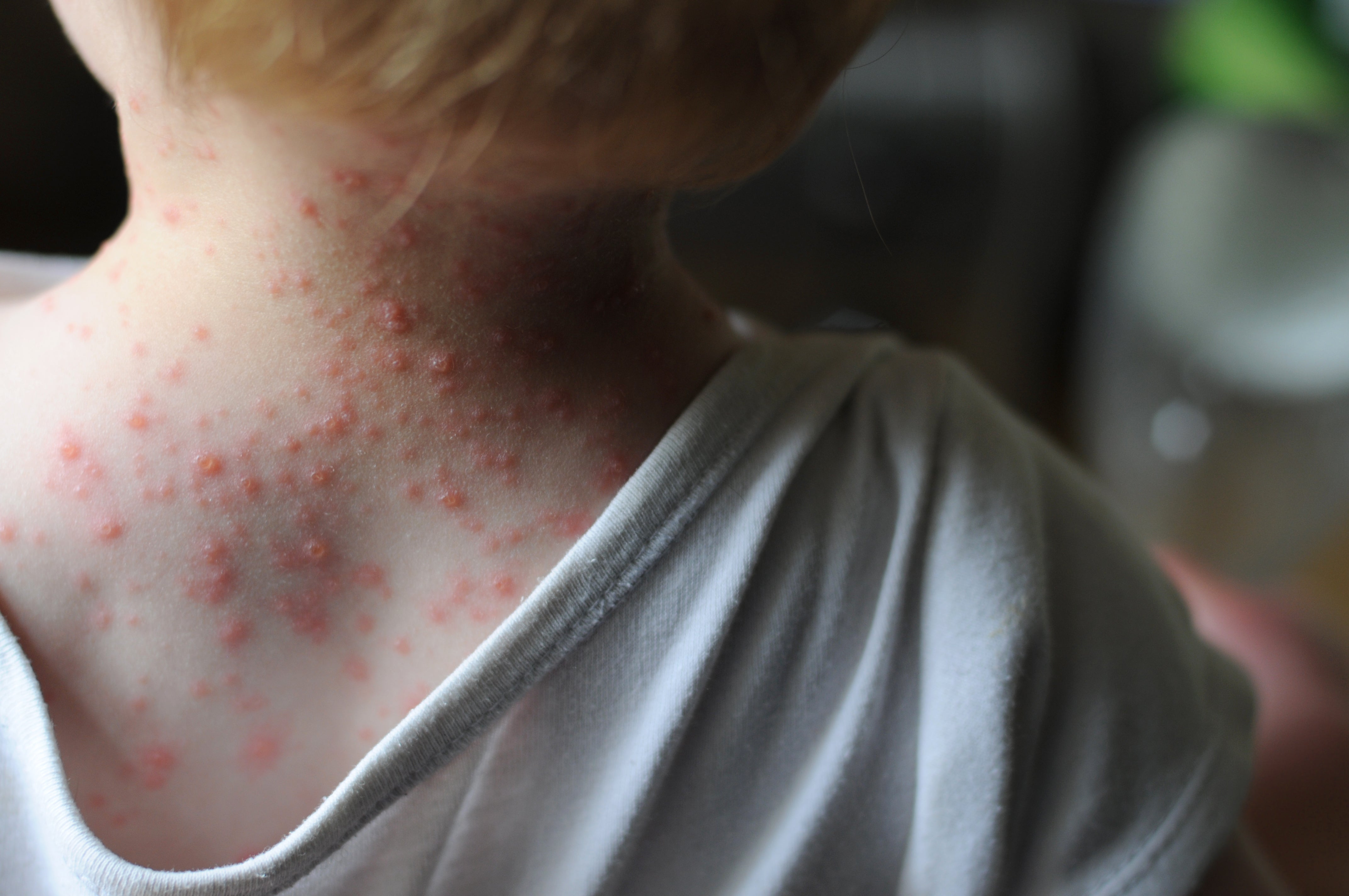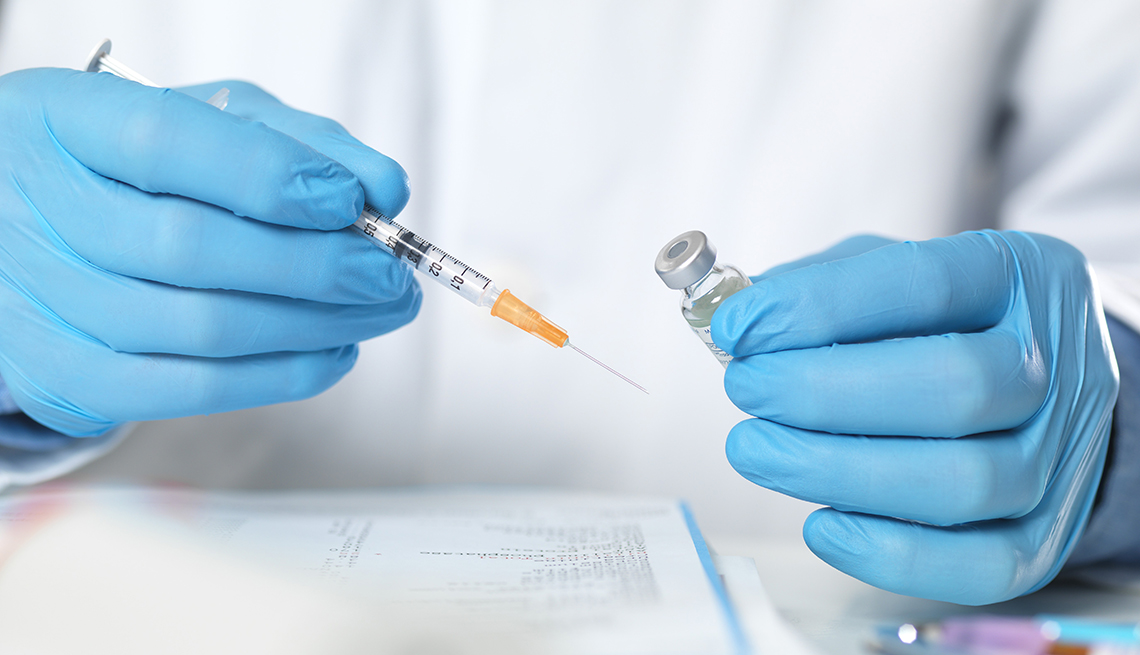Shingles on the face
Shingles, or zoster, is a common infection that occurs due to a herpes virus.
Shingles is a rash that usually appears on one side of the chest and back. It can also develop on one side of the face and around the eye.
The condition can be very painful and can sometimes have long-term side effects. No cure for shingles is available, but early treatment can lower your risk of serious complications.
What are the symptoms of shingles?
Shingles causes a red rash that forms a band on one side of your body or face. The rash can appear anywhere on your body or in several places. The second most common rash site is the face. It can spread from the ear to the nose and forehead. It can also spread around one eye, which can cause redness and swelling of the eye and surrounding area. The shingles rash occasionally develops in the mouth.
Many people feel a tingling or burning sensation days before the first red bumps appear.
The rash starts out as blisters filled with fluid, or lesions. Some people have a few clusters of blisters scattered about, and others have so many that it looks like a burn. The blisters eventually break, ooze, and crust over. After a few days, the scabs start to fall off.
Other symptoms of shingles are:
- itchiness
- sensitivity to touch
- pain
- fatigue
- a headache
- a fever
What causes shingles?
The varicella-zoster virus causes shingles. This is the same virus that causes chickenpox, or varicella. You can only get shingles if you’ve had chickenpox.
After you recover from chickenpox, the virus stays in your body for the rest of your life. It can remain dormant forever, but if it reactivates, you get shingles. It’s not clear exactly what reactivates the virus, but it’s more likely to happen if you have a compromised immune system. You can get it at any age, but your risk increases after age 60. It’s also not clear why some people get shingles primarily on the face.
What are the possible complications of shingles?
Shingles on your face can cause various complications depending on where the rash appears on your face.
Eyes
Shingles around the eye is a serious condition. The virus can affect all parts of your outer and inner eye, including the cornea and nerve cells that react to light. The symptoms include:
- redness
- puffiness
- swelling
- infection
- vision problems
Shingles in or around the eye can lead to permanent blindness.
Ears
Shingles near or in the ear can cause infections. This can lead to:
- hearing problems
- balance issues
- facial muscle weakness
Sometimes, these symptoms remain long after the rash clears up, even becoming permanent.
Mouth
If the shingles rash develops in your mouth, it can be very painful and make it difficult to eat until it clears up. It can also change your sense of taste.
Other complications
One of the most common complications of shingles is postherpetic neuralgia. This condition causes pain where you had the rash, even after it has healed. It can last weeks, months, or years.
If you get a bacterial infection on your rash, you could have permanent scarring.
Shingles causes a small increase in the risk of stroke for a few weeks to a few months. That risk is higher if you have shingles on the face.
Shingles can affect the brain, spinal cord, and blood vessels, but it’s rare. Pneumonia and brain inflammation are possible.
Complications send about 1 to 4 percent of people with shingles to the hospital. About 30 percent of them have a suppressed immune system. Shingles leads to about 96 deaths each year in the United States.
How is shingles diagnosed?
If you have symptoms of shingles, especially if they involve your face, see your doctor or ophthalmologist right away.
Doctors can usually diagnose a shingles rash by performing a physical exam. Your doctor can also take a scraping of your skin rash and send it to a lab for examination under a microscope.
It’s particularly important to seek treatment if you have a compromised immune system. Early treatment can help cut down on your chances for serious complications.
How is shingles on the face treated?
Shingles will have to run its course, but quite a few treatment options are available. These include:
- antiviral drugs
- anti-inflammatory corticosteroids, especially when the face or eyes are involved
- over-the-counter or prescription strength pain relievers
- a cool compress to soothe the rash
You should also keep your skin cool and clean to help lower the chances of infection.
What is the outlook?
If you have a particularly severe case of shingles, it could take months to go away. It can also become a long-term problem for some people. If you have postherpetic neuralgia, you may need to see your doctor more often.
Complications that involve the eye or ear may require ongoing care, especially if you have lingering vision or hearing problems.
Most people have shingles only once, but it can recur. This is more likely to happen if you have a weakened immune system.
If you haven’t had any major complications, your symptoms should clear up within a matter of weeks with few, if any, lasting effects.
How can you prevent spreading the virus?
You can’t give shingles to someone else, but the varicella-zoster virus is very contagious. If you have shingles and you expose someone else who has not had chickenpox or the chickenpox vaccine, you can give them the virus. They’ll get chickenpox, not shingles, but this puts them at risk for shingles later on.
You’re contagious when your blisters are oozing, or after they break and before they crust over. Do the following to avoid spreading the virus to others:
- Keep your rash covered, especially when the blisters are active.
- Try not to touch, rub, or scratch your rash.
- Wash your hands thoroughly and often.
Avoid contact with people who’ve never had chickenpox or the chickenpox vaccine, especially:
- pregnant women
- infants
- people with HIV
- people who take immunosuppressive drugs or chemotherapy
- organ transplant recipients
You don’t have to worry about spreading it to people who’ve already had chickenpox or the chickenpox vaccine. If you’re over age 60 and have had chickenpox but not shingles, ask your doctor if you should get the shingles vaccine.





